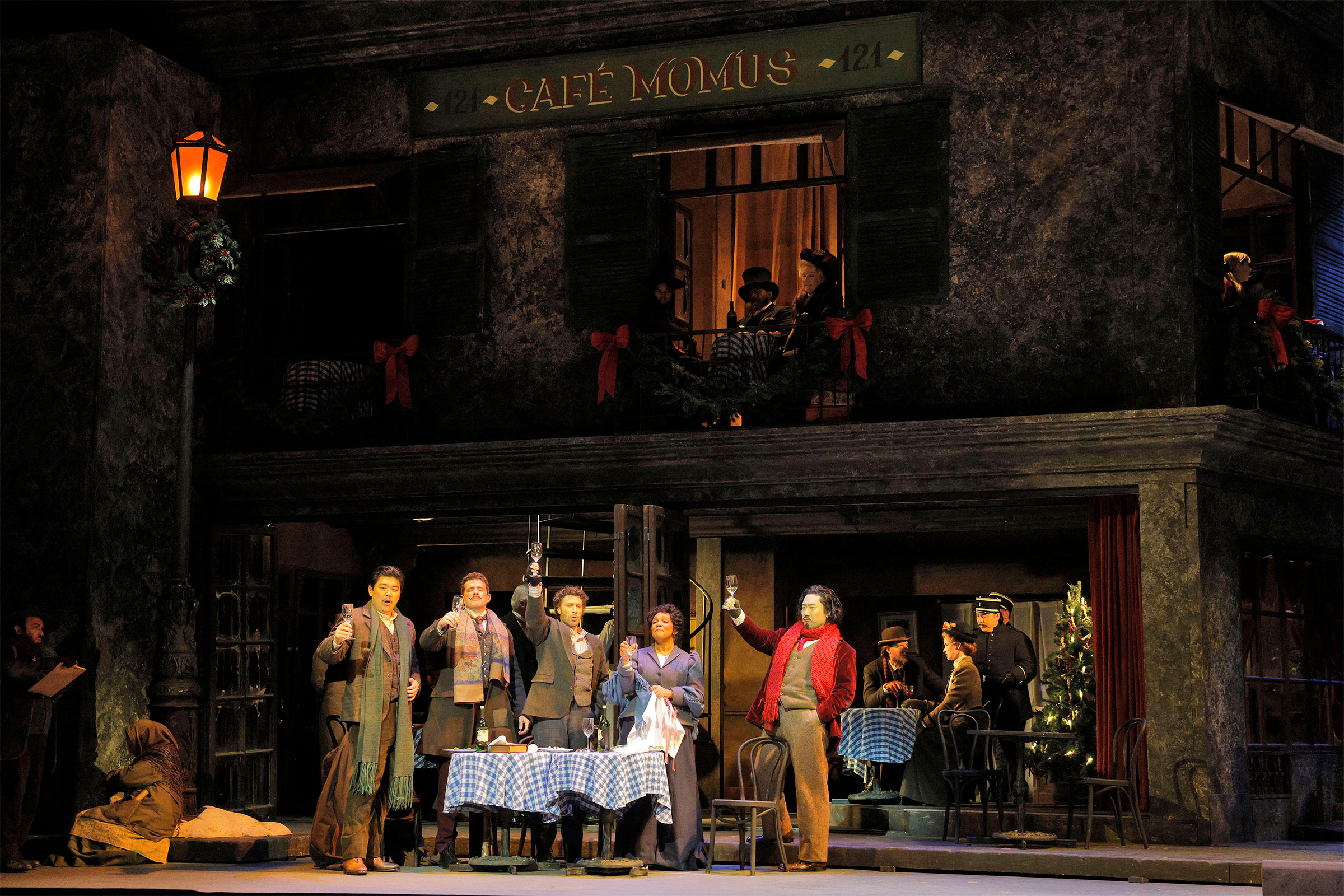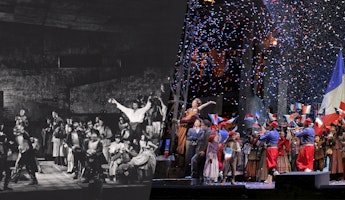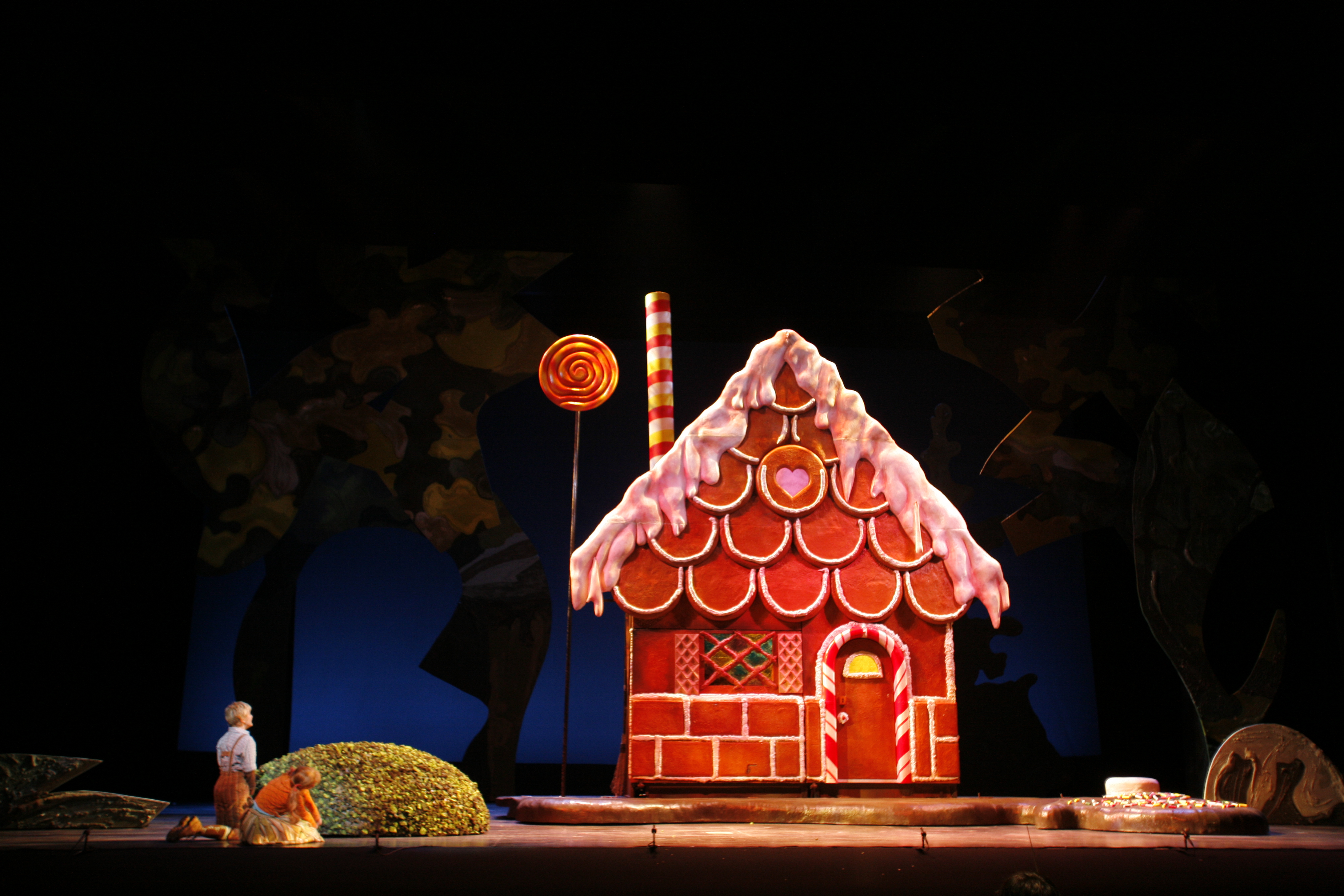Blog
November 24, 2025
The Grandest Feasts in Opera
With the weather getting colder at this time of year, even in SoCal, we're feeling the need to hang out with friends and family indoors for a change. In America, the pinnacle of this just came in the form of Thanksgiving. Our stomachs are still filled with the juicy cuts of turkey, melty and gooey mac and cheese, spoonfuls of stuffing, and plenty of other side dishes, and we have other holidays just around the corner where dining together is an important part of the celebration. In honor of this great American tradition, we want to check out five of the grandest feasts in opera. From hungry bohemians finally getting a decent meal to a house made of candy, opera has a wide variety of feasts that we can’t wait to show you.
La Bohème
The bohemian lifestyle is synonymous with being cold and hungry—these are starving artists, after all—and that is the exact state in which we find our characters in the beginning of La Bohème. The first major joy of the opera comes when the musician of the group, Schaunard, bursts into their apartment with food, wine and firewood, and a rare abundance of cash. His friends can barely believe their luck. But before the other bohemians sit down to fill their stomachs, Schaunard announces that his treats will be saved for a rainy day. It’s Christmas Eve, after all, and the boys deserve a proper feast at the Café Momus.
When they make it to the café, the painter Marcello is a bit distracted when his glamorous and chaotic ex-girlfriend Musetta shows up with an older and wealthier lover. While the rest of the gang feels pity for him, Marcello’s heartache won’t stop them from getting down to business, ordering anything they find appealing. But their meal almost comes right back up after seeing the bill they’ve accrued. Luckily for them, Musetta and Marcello decide to get back together mid meal, prompting Musetta to leave the check with her unfortunate date. The bohemians escape into the festive Paris crowds, bellies full and spirits high.
L’elisir d’amore (The Elixir of Love)
A wedding should be a cause for great joy, unless you’re in in love with the bride (and you’re not the groom). This is the situation Nemorino finds himself in when his love Adina decides to marry a dashing sergeant out of spite. To be fair to Adina, Nemorino’s affection so far has been more akin to pestering than affection, especially after drinking a “magical” love potion from the traveling charlatan. It was time that Nemorino be taught a lesson for his behavior, one that will hold up in sickness and in health, till death does it part.
Adina’s wedding and accompanying feast ends up being one of the most popular celebrations in the village—even the charlatan Dr. Dulcamara shows up and gleefully seizes the opportunity to consume all the food and wine he can (even con men need to eat, after all). And since Nemorino can't afford to buy more potions, Dr. Dulcamara’s probably looking for a free meal before the town figures out that he’s a quack and sends him on his way.
Don Giovanni
Don Giovanni may be a master at seduction, but he’s hardly the sharpest tool in the shed. Most people, when confronted with a statue of the man they murdered—complete with an inscription vowing revenge—would not respond by inviting it to dinner as a joke. But Giovanni does exactly that. Even when the statue nods and accepts, he remains completely unfazed.
Cut to Giovanni at his lavish dining table, enjoying an extravagant meal served by his long-suffering manservant Leporello, with live music to top it all off. Unbeknownst to him, it’s his last supper. Only when he’s being dragged screaming into the underworld does it occur to him that hosting the avenging spirit of a man he killed might have been a poor choice.
And really, the person our heart breaks the most for is Leporello, who manages only a few stolen bites of the feast and will probably be stuck cleaning up the supernatural mess afterward.
Macbeth
There’ll always be people who dread Thanksgiving or any family gathering where they're bound to encounter a family member or ex-friend they’d rather avoid. But at least they (hopefully) don’t have to experience the trauma of running into that person in the form of an actual ghost. But this is the exact situation Macbeth finds himself in. In his case, though...it’s hard to say that it’s not warranted.
After ordering the assassination of his best friend Banquo, Macbeth celebrates his own ascension to the throne with a banquet. (We should probably mention that he also killed the previous king, to clear the path.) The food is lavish, the nobles are gathered, the vibes are almost festive. Almost…because death apparently isn’t enough to keep Banquo from attending as he takes a seat next to Macbeth in ghost form. Macbeth is the only one who can see the ghost, which makes his panicked outbursts seem less “justified terror” and more “someone had a little too much mead.”
Naturally, this does wonders for Macbeth’s already crumbling sanity. To make matters worse, Lady Macbeth unwittingly makes Macbeth even more uncomfortable when she raises a toast to the absent Banquo. What follows is a crash out so ferocious that it leaves people second guessing the capability of the man they just crowned as king. So be grateful you only have to deal with that one annoying cousin showing up at your holiday table.
Hansel and Gretel
And finally, what feast is complete without dessert? When you’re a kid, nothing sounds more magical than stumbling upon a whole house made of gingerbread and candy. So, when a hungry Hansel and Gretel discover one deep in the forest, their excitement is instant and overwhelming. They don’t stop to wonder why a frosting-covered cottage is sitting out in the woods—they just start sampling the décor like it’s an all-you-can-eat buffet.
Of course, treats that tempt usually come with a catch. Most of you will know that the house belongs to a witch who captures the children with the intent to turn them into gingerbread and have a feast of her own. She begins to fatten-up Hansel like a prized pig, but Gretel is quick on her feet, and with some clever thinking, she turns the tables and frees both herself and Hansel from the witch’s clutches.
Once the witch is out of the picture, something wonderful happens: her spells break, and all her former captives are released from their gingerbread enchantments. Finally, the house of candy and gingerbread can live up to its delectable appearance, with everyone happily digging into the sugary walls and cookie rooftops.
It’s a cheerful, candy-coated finale—and from the audience, we can only watch with a little envy and wish someone would hand out gingerbread samples on our way out.








/03-cosi/_dsc0996_pr.jpg?format=auto&fit=crop&w=345&h=200&auto=format)















